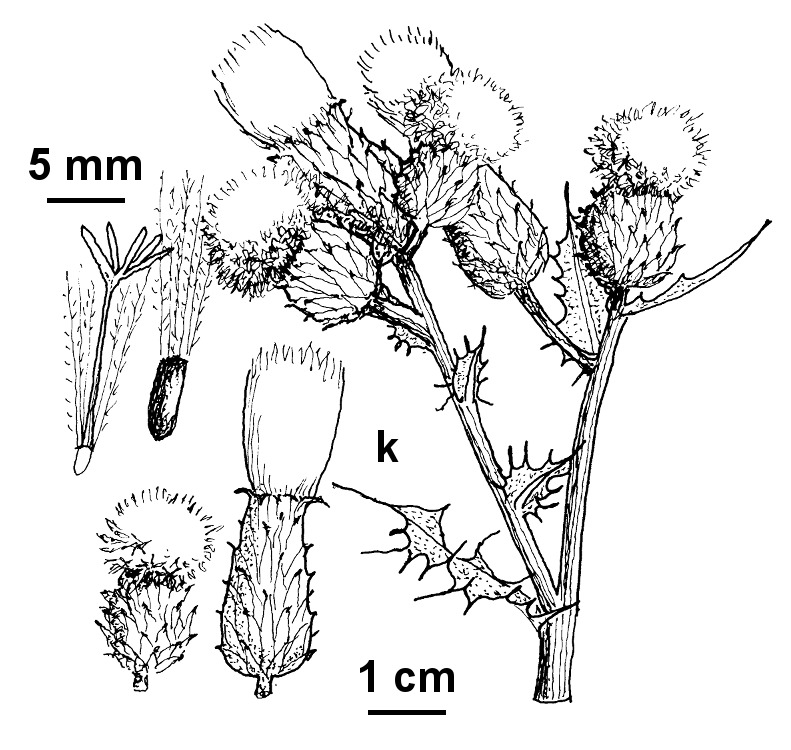Cirsium arvense var. arvense
Perennial, mostly 60–90 cm high, dioecious, extensively rhizomatous; often unbranched below inflorescences, stems wingless, cobwebbed to glabrescent. Leaves with spiny margins, dark green above, white-tomentose below; basal leaves oblanceolate, to 10 cm long, 4 cm wide, sinuate to dentate, obscurely petiolate; cauline leaves oblanceolate to lanceolate, 1–7 cm long, to 2 cm wide, pinnatifid, base subamplexicaul to somewhat decurrent. Capitula pedunculate, many in loose corymbs, globose to ovoid, 8–15 mm diam.; involucre 8–25 mm long; intermediate bracts lanceolate, erect to slightly spreading, with a broad terminal spine to c. 1 mm long, purple-tipped; inner bracts longer and narrower, acute. Florets unisexual; corolla 12–18 mm long, pale mauve. Cypselas 2.5–4 mm long, pale brown to olive green, finely grooved; pappus 2–2.5 cm long. Flowers mostly Dec.–Mar.
GleP, VVP, MuF, GipP, OtP, WaP, Gold, CVU, DunT, NIS, EGL, EGU, HSF, HNF, OtR, Strz, MonT, VAlp. Also naturalised WA, SA, NSW, Tas. Widespread and often locally common across southern parts of the State, along roadsides, in crops, pasture and wasteland, mostly on more fertile soils in higher-rainfall areas. Declared a noxious weed in Victoria.
 Spinning
Spinning

